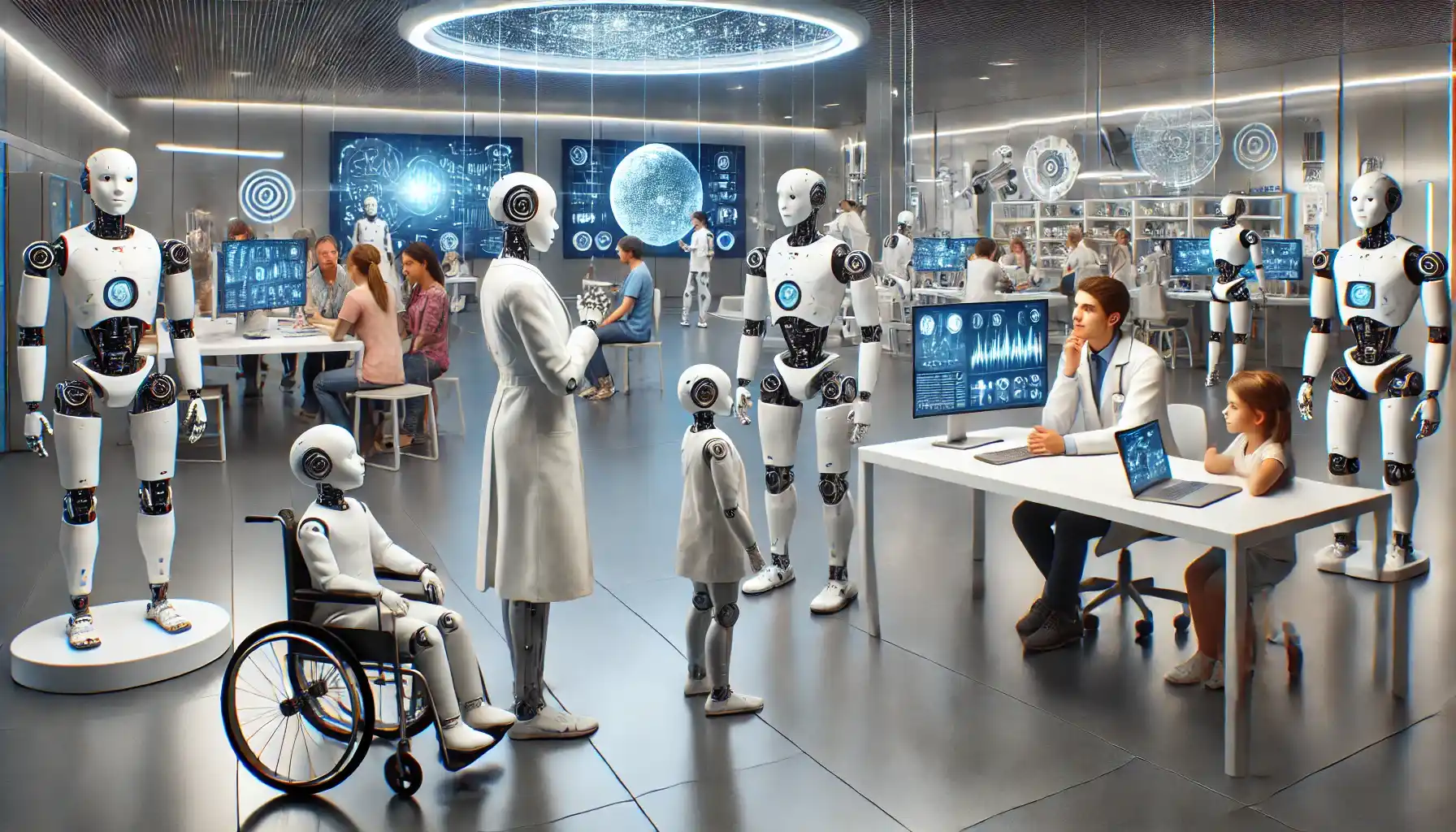In today’s technologically driven world, interactions between humans and robots are no longer confined to science fiction novels or futuristic labs. As robots become increasingly integrated into manufacturing, healthcare, education, and even household settings, the study of human-robot interaction (HRI) has taken center stage. This emerging interdisciplinary field explores how humans and robots communicate, collaborate, and coexist. In this article, we will delve into the core concepts of HRI, its real-world applications, current trends, and future directions.
Table of Contents
Understanding Human-Robot Interaction
Human-Robot Interaction (HRI) is the study of how people and robots communicate and understand each other. It combines expertise from computer science, psychology, design, cognitive science, engineering, and more. By ensuring that robots can effectively interpret human intentions and behave accordingly, HRI researchers aim to create more reliable and user-friendly robotic systems.
The Importance of Usability and Acceptance
For robots to blend seamlessly into everyday life, they must be designed with a strong focus on usability and user acceptance. This means that:
- The robot’s functions should be intuitive: If robots are too complex to operate, users will quickly abandon them.
- The robot’s appearance and behavior should not be intimidating: Friendly and approachable designs encourage trust and engagement.
- Users must understand the robot’s capabilities: Transparent communication about what a robot can and cannot do increases user confidence.
A key challenge lies in balancing functionality with human comfort levels. Overly human-like robots (sometimes referred to as uncanny valley robots) can make people uncomfortable or raise ethical concerns. On the other hand, simplistic or utilitarian designs may limit the range of tasks a robot can perform.
How Robots Interpret Human Cues
Robots must interpret human cues to respond appropriately. These cues include gestures, facial expressions, tone of voice, body language, and even subtle physiological changes. To achieve real-time perception, robots often rely on:
- Computer Vision: Capturing and interpreting images to recognize faces, detect motions, or understand gestures.
- Natural Language Processing (NLP): Enabling robots to parse, interpret, and generate human language.
- Speech Recognition: Identifying words and phrases in spoken language.
- Sensors and Wearables: Gathering information from wearable devices or touch-sensitive sensors that track movement, heart rate, or even brain waves.
By integrating these varied data sources, robots can form more precise models of human intentions, resulting in smoother interactions.
Key Areas of Application
1. Healthcare and Rehabilitation
One of the most promising areas for HRI is the healthcare sector. Robots designed for tasks like patient care, physical therapy, and social interaction can improve the overall quality of care:
- Socially Assistive Robots: These robots focus on motivating users through companionship and guidance, especially in therapeutic settings.
- Robotic Exoskeletons: Used in rehabilitation to support patients with mobility issues, exoskeletons adapt to the user’s body movements, aiding in daily tasks such as walking.
- Telepresence Robotics: Allow medical practitioners to “visit” patients remotely, reducing exposure risks and offering additional care options.
2. Education and Training
Robots can enhance learning experiences by offering individualized feedback, interactive lessons, and engaging classroom activities:
- Teaching Assistants: Robot tutors that help simplify complex subjects, particularly in STEM fields.
- Language Practice: Conversational robots that engage students in foreign language practice and speech exercises.
- Skill Development: Simulated training for specific tasks, such as medical procedures or industrial operations.
3. Manufacturing and Industry
Robots have long been a part of manufacturing and industrial processes, but the new wave of HRI focuses on collaboration:
- Cobots (Collaborative Robots): These robots work side by side with human workers, performing repetitive or dangerous tasks while humans handle more nuanced work.
- Adaptive Automation: Systems that adjust their level of automation based on operator workload, ensuring efficiency and safety.
4. Household and Service Robots
From robotic vacuum cleaners to personal care assistants, household robots are becoming increasingly common:
- Smart Home Integration: Robots that communicate with home sensors and devices, taking on daily chores like cleaning, laundry, or even cooking assistance.
- Elderly Care: Interactive robots that provide companionship, remind users of medications, and facilitate emergency alerts.
Challenges in Human-Robot Interaction
1. Safety and Reliability
Safety is paramount in any environment where humans and robots coexist. Robots need robust sensors and control mechanisms to avoid collisions or dangerous movements. In addition, failure detection and error recovery are essential to ensure minimal harm in case a system malfunctions.
2. Ethical and Privacy Concerns
The integration of robots into society raises numerous ethical questions. For instance, how should personal data collected by robots be protected? Should robots have decision-making authority in life-and-death scenarios, such as in medical contexts or autonomous vehicles?
Additionally, there are broader societal implications:
- Job Displacement: As robots become more capable, concerns grow about potential unemployment or economic disruption.
- Emotional Attachment: There is debate over the degree to which we should form emotional bonds with machines, especially in caregiving or companionship settings.
3. Cultural and Social Adaptability
Robots designed for one culture might not be well-suited for another. Cultural nuances, social norms, and language differences can pose hurdles to wide-scale adoption. For example, a robot that uses certain gestures or facial expressions in one region might inadvertently offend people in another. To address this, HRI research increasingly focuses on cross-cultural adaptability.
Current Trends in HRI Research
1. Multi-Modal Interaction
Traditional robotic systems relied heavily on visual and auditory inputs. However, modern robots incorporate multi-modal interaction, gathering data from haptic feedback, thermal sensors, and even brain-computer interfaces (BCI). This synergy allows for a richer and more nuanced understanding of human states, making interactions more seamless.
2. Personalization and Adaptive Learning
Adaptive robots can learn from individual users and tailor their behaviors accordingly. Techniques like machine learning and deep learning help robots adapt to different personalities, preferences, and skill levels. Over time, a robot might offer a more personalized experience, such as adjusting its communication style or interaction frequency to match the user’s comfort level.
3. Emotionally Intelligent Robots
Emotion recognition is a cutting-edge field in HRI. By detecting emotional cues—like stress, happiness, or frustration—robots can adjust their approach, tone, or actions. For example, a learning robot might slow down or provide additional explanations if it detects user confusion. Emotional intelligence can be especially valuable in healthcare, education, and companion robotics.
Future Directions and Innovations
The future of HRI promises groundbreaking advancements that could redefine how humans interact with technology. Several areas to watch include:
- Brain-Computer Interfaces (BCI): As these interfaces become more sophisticated, robots might be controlled via neural signals, offering new possibilities for individuals with limited mobility.
- Swarm Robotics: Involves deploying large numbers of small, simple robots that work collaboratively. Managing swarm robots through HRI poses unique challenges in communication and control.
- Soft Robotics: Made of materials like silicon and rubber, soft robots can safely interact with humans in delicate tasks, opening up new avenues for prosthetics, rescue operations, and more.
- Holographic Robots: Concepts blending virtual reality (VR) and augmented reality (AR) with robotic systems may allow for hybrid interactions that transcend physical boundaries.
Best Practices for Designers and Developers
To ensure the successful adoption of human-robot systems, designers and developers should keep in mind:
- User-Centered Design (UCD): Engage users early in the design process to incorporate feedback and real-world usability requirements.
- Iterative Testing: Conduct multiple rounds of testing in controlled and real-world settings, refining the robot’s behaviors and interfaces over time.
- Transparent Communication: Clearly communicate limitations, capabilities, and potential risks to end-users to foster trust.
- Ethical Guidelines: Follow industry standards and ethical frameworks that consider user autonomy, data privacy, and social implications.
Conclusion
Human-Robot Interaction is transforming how we live, learn, work, and even heal. By enhancing communication channels between humans and robots, the field of HRI paves the way for safer, more intuitive, and culturally adaptable robotic systems. As research continues to advance and the boundaries between humans and machines blur, ethical considerations, usability principles, and cross-cultural design will be paramount. Whether it’s assisting in medical procedures, teaching children new languages, or simply vacuuming our homes, robots play an ever-growing role in shaping the fabric of modern society.
Ultimately, the trajectory of Human-Robot Interaction depends on collaboration across disciplines. Psychologists, engineers, ethicists, and policy-makers must work together to ensure that our future with robots is one that benefits all. By focusing on safety, user acceptance, and responsible innovation, HRI stands poised to foster a new era of human-machine synergy—making our lives both richer and more efficient.
External Resource: For further reading and the latest research in human-robot interaction, visit the IEEE Robotics and Automation Society.

